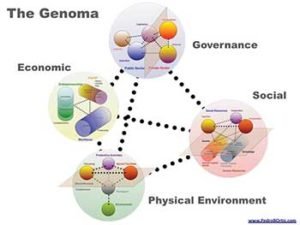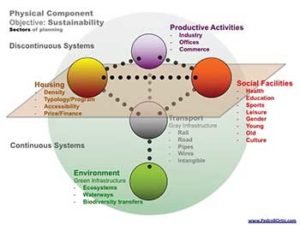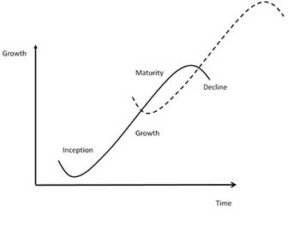Metropolitan Transport: Backbone of Efficiency
Metropolises are complex systems, probably the most complex system humans have ever built. They have to integrate and find the balance among three complex components: the economic, social, and physical. The individuals that must find that balance, that equilibrium, are the individuals in charge of governance. At the end, that means all of us, as we are all involved in the running of our metropolises. Among us all, the focus is on the dialogue between the private and public sector. Metropolises are too important to be left in the hands of the public sector only. The intelligence of the administration is evident in how it incorporates the private sector in the strategic decisions of the metropolis. Both must participate in the strategic plan of a metropolis.
 The physical component is in itself a system. Transport is part of that two-part system. The other is the environment, and both are continuous throughout metropolitan dimension. The three discontinuous systems are housing, productive activities, and social facilities. The integration of these systems comes through structural management plans for the metropolis.
The physical component is in itself a system. Transport is part of that two-part system. The other is the environment, and both are continuous throughout metropolitan dimension. The three discontinuous systems are housing, productive activities, and social facilities. The integration of these systems comes through structural management plans for the metropolis.
None of these sub-systems can be planned in isolation from the others. They have to be integrated as a single system of environment transport- land use. Many institutions agree on this, yet few apply it. The silo effect in which individual departments are isolated from each other causes resistance to transverse coordination. Bosses at the top of the pyramid are then unable to understand, know, manage, and rule the systems over which they are in charge.
We have discussed previously that size matters, and the size of a metropolis enables greater efficiency if the managers manage it right. When metropolises double their size, they become 15 percent more efficient (Geoffrey West). This does not mean you have to invite millions to come to live. Take the example of increasing your labor market by new transport links. If you tie two cities of equivalent size together by a good metropolitan modal transport system (rail), you will double the labor market, and the whole will be 15 percent more efficient. The GDP will go up 15 percent. In the case of Colombia’s Region of Caribe, that GDP growth will produce a transport investment amortization of 6 months. The problem is not on the efficiency of the investment. It is in the finance. How do you recuperate positive externalities to pay for the expenditure? That is the question.
 Metropolitan size has no limits. Mega York (Boston to Washington, DC) has a population of 44 million and financially leads the world. The Pearl River Delta has 64 million. And the new Beijing metropolitan definition holds 250 million. What limits size is management capacity. Average commuting time in efficient metropolises is 30 to 40 minutes. If your average commute takes more than an hour, your transportation infrastructure is not well managed. You should be thinking about changing your managers. You are losing a lot of money, energy, and economic potential in traffic jams or inefficient buses.
Metropolitan size has no limits. Mega York (Boston to Washington, DC) has a population of 44 million and financially leads the world. The Pearl River Delta has 64 million. And the new Beijing metropolitan definition holds 250 million. What limits size is management capacity. Average commuting time in efficient metropolises is 30 to 40 minutes. If your average commute takes more than an hour, your transportation infrastructure is not well managed. You should be thinking about changing your managers. You are losing a lot of money, energy, and economic potential in traffic jams or inefficient buses.
A given spatial structure has a given capacity. Saturation is reached with a number of vehicles. If you increase the number of vehicles you will reach gridlock. There are two ways of addressing this. You either increase space, that is you build more infrastructure and extend the provision of public transport, or you manage better. You introduce priorities for the use of the limited space, or create better public transport services, including prioritizing the limited space for highly efficient public transport modes.
Yet even management has a limit. When you reach the limits of the system, you must then shift paradigms. Such paradigm shifts are emblematic of science. Newton’s paradigm was the 18th C revolution. Einstein’s paradigm the 20th C one. Your problem is that you need a mental revolution – the most difficult of revolutions. New paradigms come at a cost. The inception is less effective until you reach the growth slope. The longer you take to introduce the new paradigm, the less efficient you will be in the long term. You must reach the growth slope as soon as possible to take off.
 We are in such a situation with our urban management skills. They are no longer valid for the new dimensions that we have to deal with. They have been great. They are the result of centuries of work and good practice. But they are no longer enough for the new challenges. The metropolitan paradigm must be introduced as soon as possible. The ones who are doing it right are not only ahead of the lagers, they will also maintain and expand their lead. Competition is efficient, but unjust.
We are in such a situation with our urban management skills. They are no longer valid for the new dimensions that we have to deal with. They have been great. They are the result of centuries of work and good practice. But they are no longer enough for the new challenges. The metropolitan paradigm must be introduced as soon as possible. The ones who are doing it right are not only ahead of the lagers, they will also maintain and expand their lead. Competition is efficient, but unjust.
You should be intelligent rather than smart. High-tech city gadgets (the infrastructure of the so-called “smart city”) are instruments, not objectives on their own. You must first know what you need before going for it. And understanding what you need comes from a comprehensive approach to understand your metropolises. Realize that if Indian metropolises do not work, India will not work. India itself is at stake.
Pedro B. Ortiz is a metropolitan management consultant for multilateral institutions, national and regional governments and IGO’s (IDB, WB, UN, ADB, UN-Habitat, etc.). He is the author of “The Art of shaping the metropolis”–a groundbreaking approach to the necessary way to manage metropolises.
 TrafficInfraTech Magazine Linking People Places & Progress
TrafficInfraTech Magazine Linking People Places & Progress


